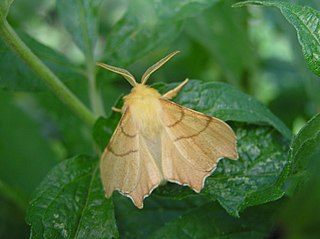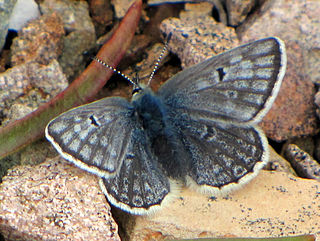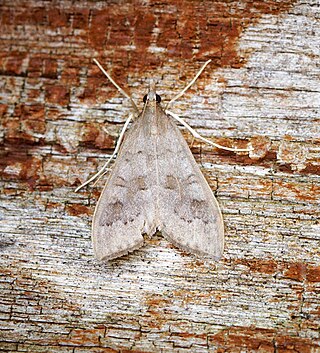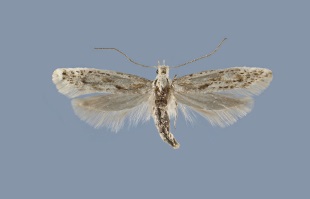Related Research Articles

The Cottian Alps are a mountain range in the southwestern part of the Alps. They form the border between France and Italy (Piedmont). The Fréjus Road Tunnel and Fréjus Rail Tunnel between Modane and Susa are important transportation arteries between France and Italy (Turin).

The silver-ground carpet is a moth of the family Geometridae. The species was first described by Michael Denis and Ignaz Schiffermüller in 1775. It is common throughout the Palearctic region including the Near East and North Africa.It is found in a variety of different habitats and occurs, for example, in humid forests, moorland and shore areas, on embankments or on unimproved grass meadows and heathlands as well as in gardens.

Ennomos erosaria, the September thorn, is a moth of the family Geometridae. The species can be found in the Palearctic realm in western Europe and from central Scandinavia. Its range extends to the northern Mediterranean and east to the Caucasus and Russia. It is widespread in mixed and deciduous forests in Europe. The south eastern occurrence reaches Turkey and the Caucasus. The main habitat is dry deciduous forests and parks. In the Southern Alps, the species rises to an altitude of about 1600 metres.

Anania fuscalis is a species of moth of the family Crambidae. It is found in Europe.
Syrianarpia is a genus of moths of the family Crambidae.

Agriades glandon, the Arctic blue or Glandon blue, is a species of butterfly in the family Lycaenidae. It in found in Eurasia and North America.

Mecyna asinalis, sometimes known as the madder pearl, is a species of moth of the family Crambidae found in Europe.
Syrianarpia mendicalis is a species of moth in the family Crambidae. It is found in Ukraine, Turkey and Iran.
Syrianarpia kasyi is a species of moth in the family Crambidae described by Patrice J.A. Leraut in 1984. It is found in Iran.
Catoptria radiella is a species of moth in the family Crambidae. It is found in France, Italy, Poland and Romania.

Orenaia alpestralis is a species of moth in the family Crambidae.

Monte Orsiera is a mountain in the Cottian Alps belonging to the Province of Turin (Italy).

Scopariinae is a subfamily of the lepidopteran family Crambidae. The subfamily was described by Achille Guenée in 1854.
Blepharomastix leuconephralis is a species of moth in the family Crambidae. It was described by George Hampson in 1918. It is found in Colombia.
Blepharomastix monocamptalis is a species of moth in the family Crambidae. It was described by George Hampson in 1918. It is found in Colombia.
Choristostigma elegantalis is a moth in the family Crambidae. It was described by Warren in 1892. It is found in North America, where it has been recorded from Arizona, California and Washington.
Prophantis triplagalis is a moth in the family Crambidae. It was described by William Warren in 1896. It is found in India, where it has been recorded from the Khasia Hills.
Syllepte heliochroa is a moth in the family Crambidae. It was described by George Hampson in 1912. It is endemic to Papua New Guinea.

Kessleria cottiensis is a moth of the family Yponomeutidae. The species was first described by Peter Huemer and Marko Mutanen in 2015. It is found only in a small area in the south-western Alps of Italy and France. The habitat consists of alpine grasslands interspersed with calcareous rocks.

Kessleria dimorpha is a moth species of the family Yponomeutidae. It is found only on the French side of Col Agnel, close to the Italian border. The habitat consists of rocky areas on siliceous soil
References
- ↑ Nuss, M.; et al. (2003–2012). "GlobIZ search". Global Information System on Pyraloidea. Retrieved 2012-03-07.
- ↑ Gianti, Mauro (2004). "Syrianarpia faunieralis sp. n. from the Cottian Alps of Italy (Crambidae: Scopariinae)". Nota Lepidopterologica. 27 (4): 299–302. ISSN 0342-7536 – via Internet Archive.
- ↑ Fauna Europaea